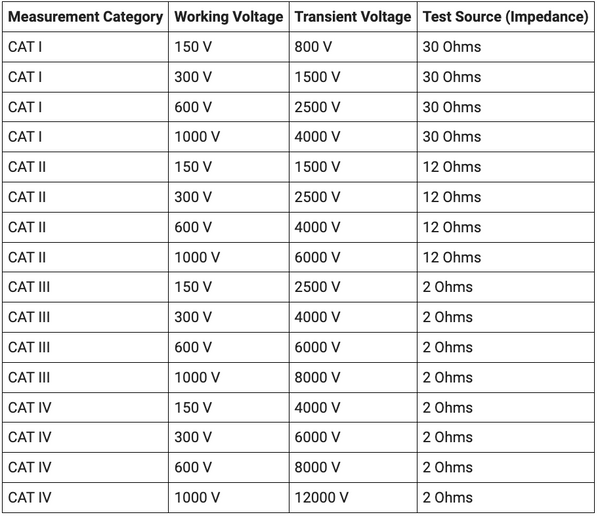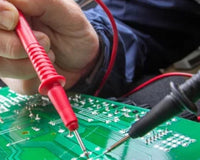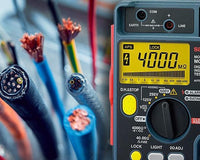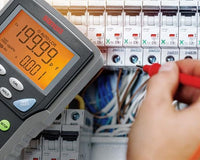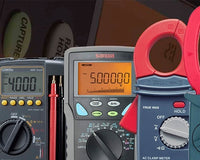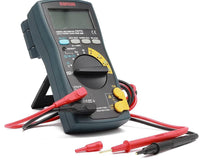If you're working with electronics or electrical systems, a multimeter is an essential in your tool kit. But not all multimeters are created equal. Different models have different capabilities, and it's important to understand how to use them safely and effectively.
One of the most critical aspects to consider is the category rating system, which divides multimeters into different categories based on the types of electrical systems they can safely measure. The rating system was developed by the International Electrotechnical Commission (IEC), a global organization that sets standards for electrical and electronic technology.
The categories are numbered from I to IV, with each level representing a higher level of protection and safety. The rating system is based on how much voltage and current the meter can withstand without breaking down or causing damage, and it's important to choose a multimeter with a high enough rating for the job you're doing.
Breakdown of IEC Multimeter Categories:
This category is the lowest and applies to measurements made on circuits that are not directly connected to the mains, such as electronic circuits powered by batteries or low-voltage transformers. A CAT I meter is not designed to withstand high-energy transients and can only handle low-level voltages up to 600 volts.
This category applies to measurements made on circuits that are connected directly to the mains, such as household appliances, power tools, and lighting circuits. A CAT II meter can handle higher-energy transients than a CAT I meter and is designed to withstand voltages up to 1000 volts.
This category applies to measurements made on the distribution side of the mains, such as in substations and panel boards. A CAT III meter can handle even higher-energy transients and is designed to withstand voltages up to 6000 volts.
This category is the highest and applies to measurements made at the source of the mains, such as at the utility meter or the main service panel. A CAT IV meter can handle the highest-energy transients and is designed to withstand voltages up to 8000 volts.
It's also essential to use the appropriate category of meter for the job at hand. If you're working on a circuit that requires a CAT III meter and you use a CAT II meter instead, you risk damaging the meter and potentially causing harm to yourself or others.
In addition to the category rating system, multimeters also have other safety features to protect against electrical hazards, such as fuses and surge protection. Fuses are designed to break the circuit if the current exceeds a certain level, while surge protection helps to prevent damage from voltage spikes.
When choosing a multimeter, look for one that has the appropriate category rating for the work you'll be doing. It's also a good idea to choose a model with additional safety features like fuses and surge protection.
Recommended Digital Multimeters:
The Sanwa CD771 Digital Multimeter is an economical meter designed for low power circuit analysis, small communication equipment, and home appliances. The device is rated for CAT II (1000 Volts) and CAT III (600 Volts) ranges.
The Sanwa PM3 is a pocket-size digital multimeter that offers many of the features of a standard-size multimeter. This meter is is also designed for low power circuits, is rated for CAT II (500 Volts).
For professionals who work on high-power circuits, the Sanwa PC710 Professional Datalogging Multimeter is an excellent choice. The PC710 is equipped with True RMS, is compliant with CAT. III (600 V), CAT.II (1000 V), and can measure voltage, current, resistance, frequency, and temperature. It also features a backlit LCD, data logging function and PC connectivity.
If you're looking for a multimeter that can handle a wide range of applications, the Sanwa CD772 is an excellent choice. The Sanwa CD772 Digital Multimeter is designed for measurements in the CAT II (1000 Volts) and CAT III (600 Volts) ranges, and can measure voltage, current, resistance, capacitance, frequency, and temperature. It also features True RMS, and a continuity buzzer.
The category rating is a critical aspect to consider when choosing a multimeter. Understanding the different categories and what they mean will help ensure that you use the right tool for the job and stay safe while working with electricity. Always choose a multimeter with a high enough category rating for the job at hand and look for additional safety features like fuses and surge protection.
IEC Transient Test Guidelines for Categories I - IV:
